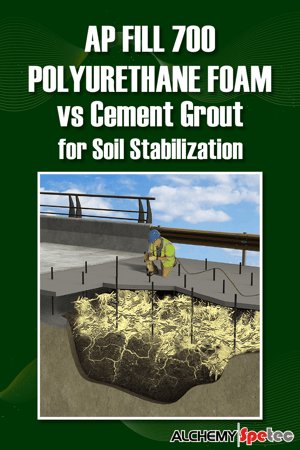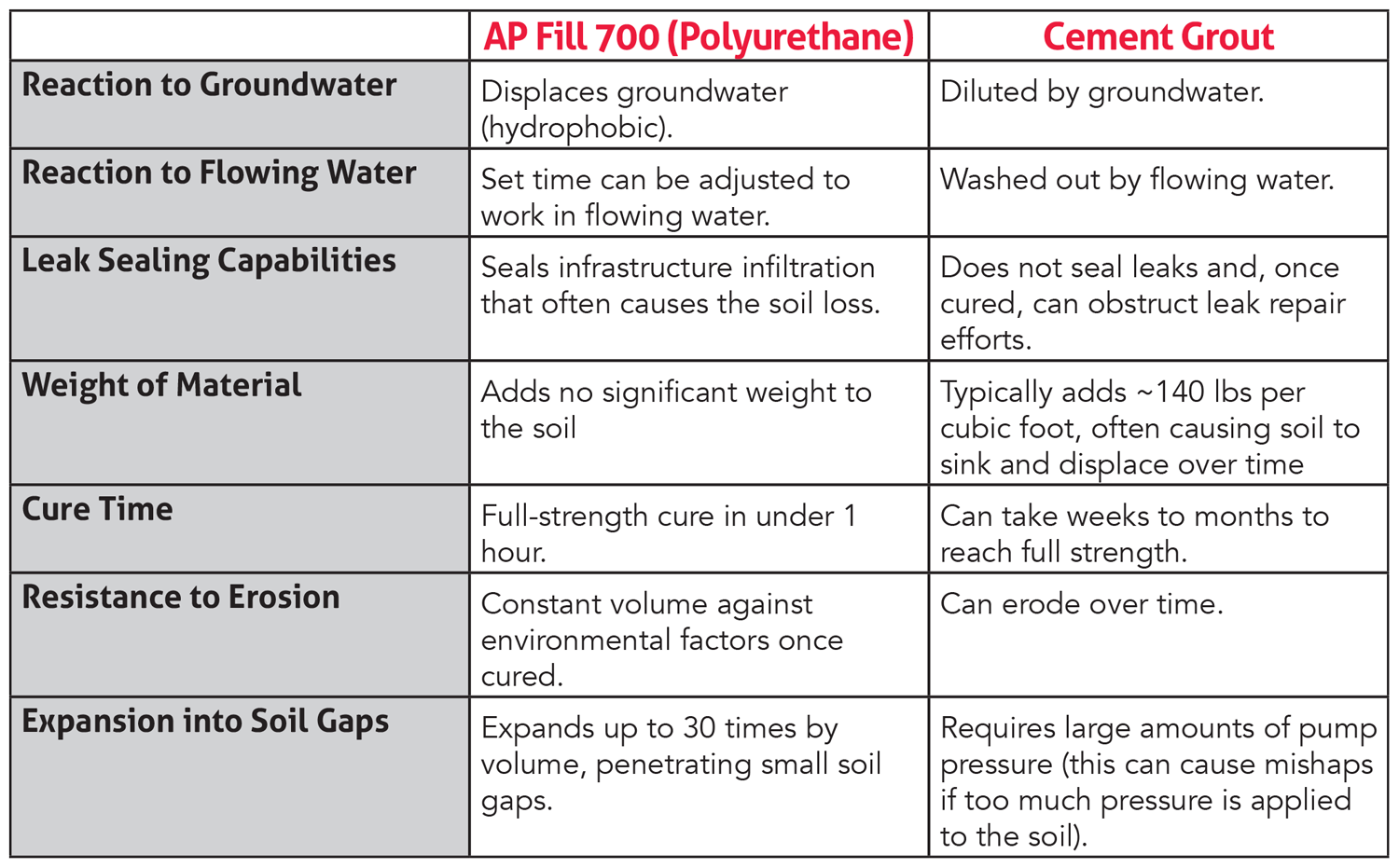
 One request we often receive is to explain the difference between AP Fill 700 polyurethane foam and cement grout for soil stabilization. When you're asked a question repeatedly, it's probably a sign that the answer(s) would make a good blog post. So here they are...
One request we often receive is to explain the difference between AP Fill 700 polyurethane foam and cement grout for soil stabilization. When you're asked a question repeatedly, it's probably a sign that the answer(s) would make a good blog post. So here they are...
AP Fill 700 is a one-component, water activated, hydrophobic, low viscosity, closed cell foam. It adds no weight to the soil, has a quicker set time, resists erosion, and displaces groundwater, and expands during installation - penetrating small soil gaps in the process. AP Fill 700 can also be adjusted to work in flowing water and installed in any climate. These are all very beneficial characteristics for soil stabilization. As you'll see in the comparison table below, the characteristics of cement grout are not exactly the same.
Comparing AP Fill 700 & Cement Grout for Soil Stabilization

Environmentally Safe
AP Fill 700 is NSF approved for contact with potable water, ensuring compliance with the Safe Water Drinking Act (SDWA) and guaranteeing peace of mind for in-the-field stakeholders on soil stabilization projects.


